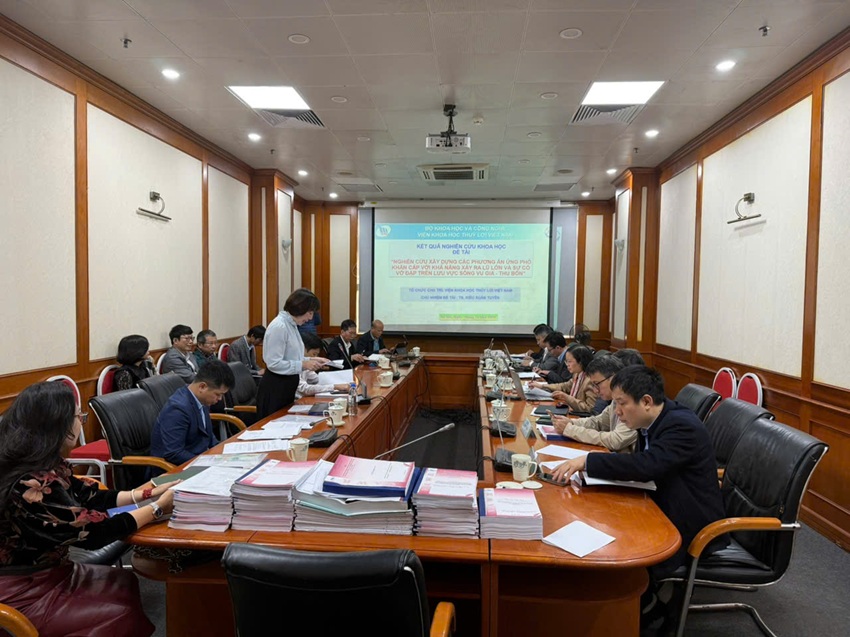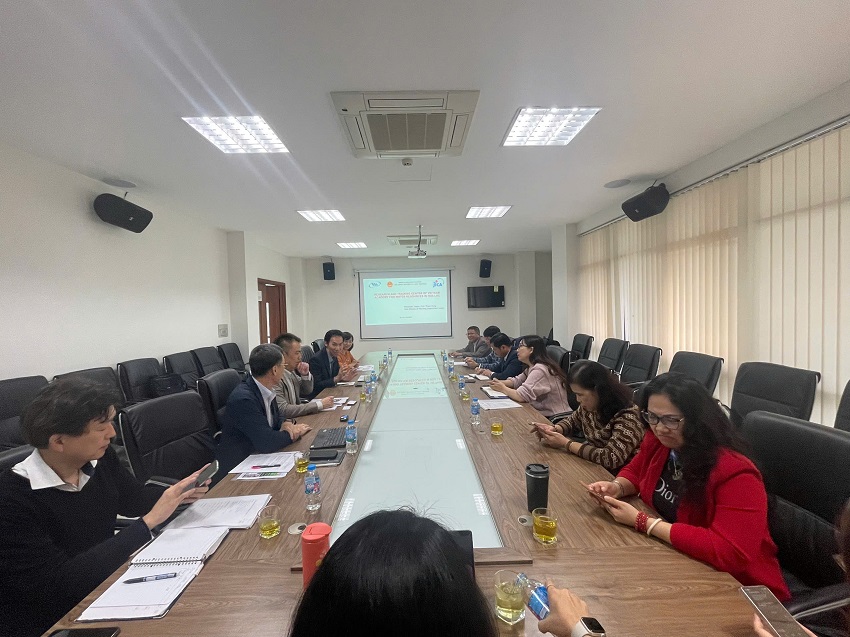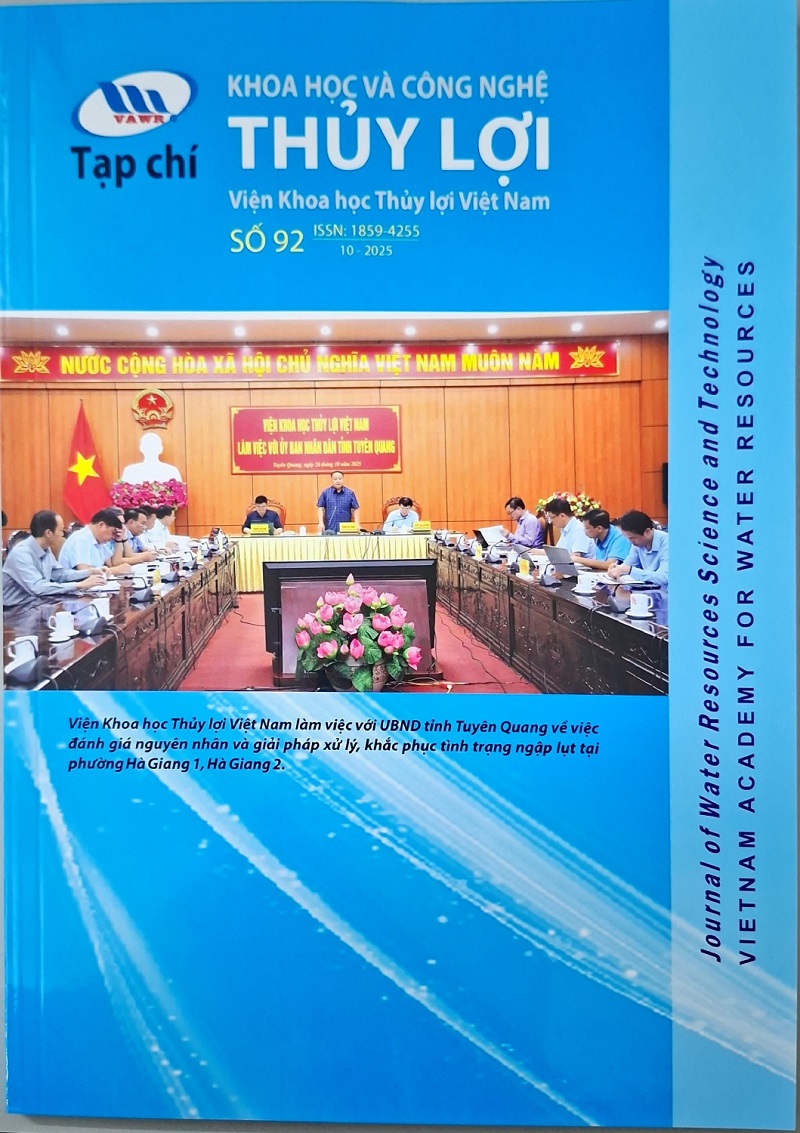Assessment of hydro-climatological drought conditions for Hong-Thai Binh river watershed in Vietnam using high-resolution model simulation
19/08/2021Understating hydro-climatological conditions in a transboundary is always challenging because of issues in sharing available data among riparian countries. The present study has explored the hydro-climatological drought conditions over Hong-Thai Binh river watershed (H-TBRW) based on the downscaled rainfall and reproduced streamflow by the state-of-the-art coupled regional hydroclimate model. The standardized precipitation index (SPI) and streamflow drought index (SDI) indicators are used to define the climatological and hydrological drought conditions, respectively. Both SPI and SDI are derived from the precipitation and streamflow data reproducibility for the H-TBRW during 1950-2015. The results demonstrate a slight increasing trend in both climatological and hydrological conditions. Over the H-TBRW, results reveal that the Da and Thao rivers strongly expect drought conditions; meanwhile, the remaining rivers are very likely to experience similar drought conditions as in the past.
Introduction
Methodology, study area, and data
Results and discussion
Conclusions and remarks
ACKNOWLEDGEMENTS
REFERENCES
[1] K.N. Kumar, et al. (2013), “On the observed variability of monsoon droughts over India”, Weather Clim. Extrem., 1, pp.42-50.
[2] IPCC (2018), Climate Change 2013: The Physical Science Basis. Contribution of Working Group I to the Fifth Assessment Report of the Intergovernmental Panel on Climate Change, Cambridge University Press, Cambridge, UK and New York, NY, USA, 1585pp.
[3] K. Takara, et al. (2009), “Assessing climate change impact on water resources in the Tone river basin, Japan, using super-high resolution atmospheric model output”, J. Disaster. Res., 4(1), pp.12-22.
[4] D.H. Burn, M.A.H. Elnur (2002), “Detection of hydrologic trends and variability”, J. Hydrol., 255, pp.107-122, http://dx.doi.org/10.1016/S0022-1694(01)00514-5.
[5] L.H. Benjamin, M.A. Saunders (2002), “A drought climatology for Europe”, International Journal of Climatology, 22, pp.1571-1592.
[6] A. Dai (2013), “Increasing drought under global warming in observations and models”, Nat. Clim. Change, 3, pp.52-58, http://dx.doi.org/10.1038/nclimate1633.
[7] C. Ho, A. Nguyen, A. Ercan, M.L. Kavvas, V. Nguyen, T. Nguyen (2018), “Assessment of atmospheric conditions over the Hong-Thai Binh river watershed by means of dynamically downscaled ERA-20C reanalysis data”, Journal of Water and Climate Change, jwc2018291, Doi: 10.2166/wcc.2018.291.
[8] W.C. Palmer (1965), Research Paper No. 45 - Meteorological drought, U.S. Department of Commerce, Weather Bureau, Washington D.C.
[9] W.C. Palmer (1968), “Keeping track of crop moisture conditions, nationwide: the new Crop Moisture Index”, Weatherwise, 21(4), pp.156-161.
[10] B.A. Shafer, L.E. Dezman (1982), “Development of a Surface Water Supply Index (SWSI) to assess the severity of drought conditions in snowpack runoff areas”, Proceedings of the Western Snow Conference, pp.164-175, Colorado State University, Fort Collins, Colorado.
[11] R.A. Seiler, M. Hayes, L. Bressan (2002), “Using the standardized precipitation index for flood risk monitoring”, International Journal of Climatology, 22(11), pp.1365-1376.
[12] S.K. Min, W.T. Kwon, E.H. Park, Y.G. Choi (2003), “Spatial and temporal comparisons of droughts over Korea with East Asia”, International Journal of Climatology, 23, pp.223-233.
[13] S. Morid, V. Smakhtin, M. Moghaddasi (2006), “Comparison of seven meteorological indices for drought monitoring in Iran”, International Journal of Climatology, 26(7), pp.971-985.
[14] National Centers for Environmental Information, https://www.ncdc.noaa.gov/sotc/drought/201904#det-spi.
[15] I. Nalbantis, G. Tsakiris (2009), “Assessment of hydrological drought revisited”, Water Resour Manag., 23(5), pp.881-897.
[16] C. Ho, T. Trinh, A. Nguyen, Q. Nguyen, A. Ercan, M.L. Kavvas (2019), “Reconstruction and evaluation of changes in hydrologic conditions over a transboundary region by a regional climate model coupled with a physically-based hydrology model: application to Thao river watershed”, Science of The Total Environment., 668, pp.768-779.
[17] H.V. Cuong, N.T.N. Nhan, T.V. Bach, T.Q. Toan (2019), “Research on drought conditions in the Red - Thai Binh basin with meteorological and hydrological data recovered from the combined model WEHY-WRF”, Journal of Water Resources Science and Technology, 52, pp.48-64 (in Vietnamese).
[18] N.V. Thang, et al. (2015), National Science and Technology Program, code KC.08.17/11-15. Study and establish a drought forecast and warning system for Vietnam with a duration of up to 3 months (in Vietnamese).
[19] V.T. Hang, T.T. Ha (2013), “Comparison of drought indices for climatological regions of Vietnam”, VNU Journal of Science: Natural Sciences and Technology, 2S(29), pp.51-57 (in Vietnamese).
Ho Viet Cuong1, Do Hoai Nam1*, Trinh Quang Toan2
1Vietnam Academy for Water Resources
2Hydrologic Research Laboratory, Department of Civil and Environmental Engineering, University of California, USA
Received 20 March 2019; accepted 5 June 2019
Environmental Sciences | Climatology Doi: 10.31276/VJSTE.61(2).90-96
Ý kiến góp ý:









